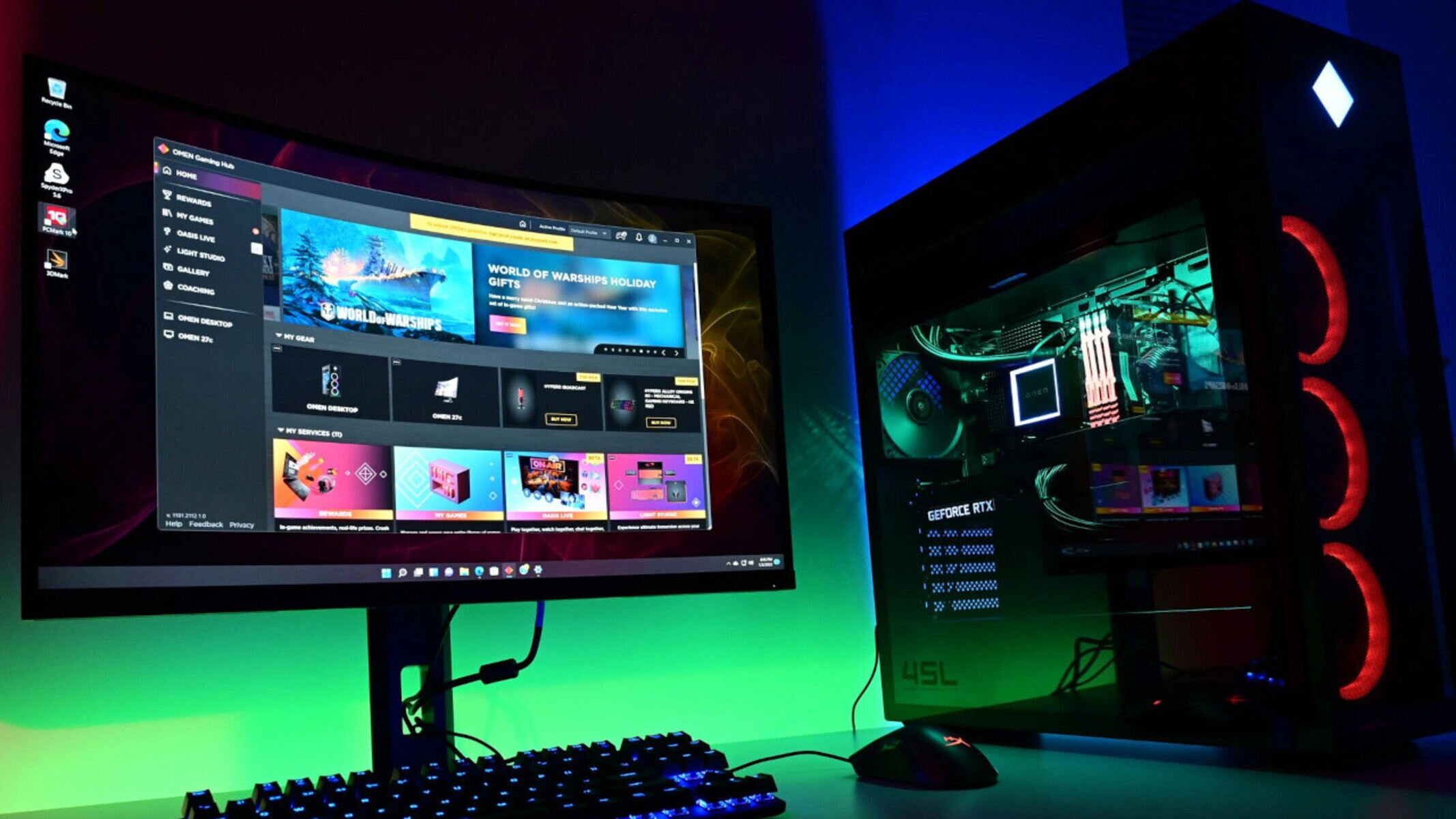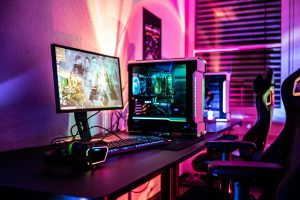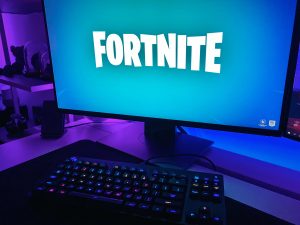What is PC speed?
PC speed refers to the overall performance and processing power of a personal computer. It is a measure of how quickly the computer can handle tasks, process information, and execute commands. PC speed encompasses various components such as the processor (CPU), memory (RAM), storage (hard drive or SSD), and graphics capability.
The speed of a PC directly influences how efficiently it can perform everyday tasks and handle more demanding applications. When a PC has a higher speed, it can complete tasks faster and provide a smoother user experience.
The speed of a PC is typically measured in terms of clock speed, measured in gigahertz (GHz) for the processor, and megahertz (MHz) or gigabytes per second (GB/s) for memory and storage. A higher clock speed indicates that the computer can process instructions more quickly, resulting in faster computations and improved performance.
However, it is important to note that PC speed is not the sole determinant of a computer’s overall performance. Other factors, such as the efficiency of the operating system, the quality of software optimization, and the presence of malware or unnecessary programs, can also impact a PC’s speed and performance.
PC speed is crucial for ensuring smooth multitasking, quick program launches, and seamless web browsing. Whether you’re checking emails, editing documents, streaming videos, or playing games, having a PC with sufficient speed can make a noticeable difference in your everyday computing experience.
Now that we understand the significance of PC speed, let’s delve into how it affects different daily tasks and explore the minimum requirements for common activities.
Impact of PC speed on daily tasks
The speed of your PC can have a significant impact on the performance of various daily tasks. Whether you’re browsing the internet, working on documents, or editing photos, a faster PC can greatly enhance your productivity and overall experience. Let’s explore some common tasks and how PC speed affects them:
- Web browsing: A faster PC can load web pages quickly, allowing you to navigate the internet more efficiently. Slow PC speed can result in frustratingly long page load times and sluggish browsing experience.
- Document editing: When it comes to editing documents, a faster PC ensures smoother scrolling, typing, and formatting. Delayed response times due to slow PC speed can disrupt your workflow and make simple tasks more time-consuming.
- Multimedia streaming: Whether you’re watching videos on YouTube or streaming movies on Netflix, a faster PC can handle high-quality media playback without buffering or stuttering. Slow PC speed can result in constant pauses and disruptions, leading to a subpar viewing experience.
- Photo editing: Editing and enhancing photos require substantial processing power. With a faster PC, you can apply filters, adjust colors, and manipulate images smoothly and efficiently. Slower PCs may struggle to handle resource-intensive photo editing software, resulting in lag and delays.
- Gaming: PC speed is crucial for avid gamers. A faster PC can deliver smooth gameplay with high frame rates and minimal lag. On the other hand, slow PC speed can result in choppy graphics, delayed response times, and overall poor gaming experience.
These are just a few examples of how PC speed impacts daily tasks. In general, a faster PC allows you to complete tasks more efficiently, reduces wait times, and provides a more seamless user experience. However, it’s important to note that the impact of PC speed can vary depending on the specific requirements of the task and the software being used.
Now that we’ve explored the impact of PC speed on daily tasks, let’s discuss the minimum requirements for common activities to ensure optimal performance.
Minimum requirements for common tasks
When it comes to common tasks such as web browsing, document editing, multimedia streaming, and basic photo editing, having a PC that meets the minimum requirements is essential for smooth and efficient performance. Here are the minimum requirements for each of these tasks:
- Web browsing: For basic web browsing, a PC with a dual-core processor (2.0 GHz or higher), 4GB of RAM, and a solid-state drive (SSD) or a traditional hard drive with at least 128GB of storage is recommended. These specifications will ensure quick page loading and seamless browsing experience.
- Document editing: To work on documents smoothly, a PC with a dual-core processor (1.6 GHz or higher), 4GB of RAM, and at least 256GB of storage is sufficient. These specifications will allow for smooth scrolling, typing, and formatting while working with documents.
- Multimedia streaming: For streaming videos and multimedia content, a PC with a dual-core processor (2.0 GHz or higher), 8GB of RAM, and a dedicated graphics card is recommended. This will ensure smooth playback of high-definition content without buffering or stuttering.
- Basic photo editing: For basic photo editing tasks, a PC with a quad-core processor (2.5 GHz or higher), 8GB of RAM, and a dedicated graphics card is recommended. These specifications will provide enough processing power and memory to handle photo editing software efficiently.
It’s important to note that these minimum requirements are for basic tasks and may not be sufficient for more demanding activities such as gaming or professional-grade photo and video editing. For those tasks, a PC with higher specifications, including a faster processor, more RAM, and a dedicated graphics card, is necessary to ensure optimal performance.
When considering the minimum requirements for your PC, it’s also important to keep in mind that software requirements may vary. Always check the system requirements specified by the software or applications you use to ensure compatibility and optimal performance.
Now that we’ve covered the minimum requirements for common tasks, let’s explore the PC speed required for more demanding activities.
Moderate PC speed for more demanding tasks
When it comes to more demanding tasks such as video editing, graphic design, and gaming, a moderate PC speed is necessary to handle the increased workload and resource-intensive applications. Here are the recommended specifications for these tasks:
- Video editing: For video editing, a PC with a quad-core or higher processor (preferably with a higher clock speed), 16GB of RAM, and a dedicated graphics card is recommended. These specifications will ensure smooth video editing, rendering, and exporting.
- Graphic design: Graphic design tasks require a PC with a powerful processor, ample RAM, and good graphics capabilities. Ideally, a PC with a quad-core or higher processor, 16GB or more of RAM, and a dedicated graphics card with at least 4GB of video memory is recommended for graphic design work.
- Gaming: PC gamers typically require a higher PC speed to handle the latest games with demanding graphics and processing requirements. A PC with a quad-core processor (preferably with a higher clock speed), 16GB or more of RAM, and a dedicated graphics card with a minimum of 4GB of video memory is recommended for smooth gaming performance.
For these more demanding tasks, it’s crucial to have a PC that can handle the heavy computational load and provide a seamless user experience. Investing in a PC with higher specifications will ensure smoother workflow, faster rendering times, and better overall performance.
When choosing a PC for more demanding tasks, it’s also important to consider factors such as the quality and size of the display, the storage capacity, and the cooling system. These factors can impact the overall performance and user experience when working with large files or running resource-intensive applications.
Now that we’ve explored the moderate PC speed requirements for more demanding tasks, let’s discuss the factors that can affect PC speed and performance.
High-end PC speed for professional work
For professionals who work with demanding applications such as 3D modeling, animation, virtual reality, and high-resolution video editing, a high-end PC speed is crucial to ensure smooth performance and efficient workflow. Here are the recommended specifications for professional work:
- 3D modeling and animation: Professionals in the field of 3D modeling and animation require a high-end PC with a powerful multi-core processor (such as Intel Core i7 or AMD Ryzen 7), 32GB or more of RAM, and a high-performance graphics card (such as NVIDIA GeForce RTX or AMD Radeon Pro). These specifications will provide the necessary processing power, memory, and graphics capability for complex 3D modeling and animation tasks.
- Virtual reality (VR) development: VR developers need a PC with exceptional performance to create immersive virtual reality experiences. A high-end PC for VR development typically includes a top-tier multi-core processor, 32GB or more of RAM, a high-performance graphics card with VR support, and a solid-state drive (SSD) for fast data access. These specifications ensure smooth VR development and testing.
- High-resolution video editing: Professionals involved in high-resolution video editing, such as 4K or 8K video, require a high-speed PC with a powerful processor (such as Intel Core i9 or AMD Ryzen 9), 32GB or more of RAM, and a high-performance graphics card with ample video memory. Additionally, a large and fast storage capacity, preferably an SSD, is necessary for storing and accessing large video files efficiently.
High-end PCs offer the necessary processing power, memory capacity, and graphics capability to handle the intense computational tasks associated with professional work. Investing in a high-end PC ensures faster rendering times, smoother multitasking, and overall improved productivity for professionals in these industries.
It’s important to keep in mind that professional work requirements may vary based on the specific software and applications used. Always check the system requirements specified by the software manufacturer to ensure compatibility and optimal performance.
Now that we’ve explored the high-end PC speed requirements for professional work, let’s discuss the factors that can affect PC speed and performance.
Factors that can affect PC speed
Several factors can significantly impact the speed and performance of a PC. Understanding these factors can help you identify and address any potential issues that may be hindering your PC’s speed. Here are some key factors to consider:
- Hardware specifications: The hardware components of your PC, such as the processor, RAM, storage, and graphics card, play a crucial role in determining its speed. Upgrading to faster and more powerful hardware can improve overall performance.
- Software optimization: The efficiency of the software running on your PC can affect its performance. Poorly optimized software, bloated applications, and unnecessary background processes can slow down your PC. Regular software updates and maintenance can help improve performance.
- Storage type and capacity: The type of storage device and its capacity can impact how quickly data is accessed by your PC. Solid-state drives (SSDs) are generally faster than traditional hard disk drives (HDDs), resulting in faster boot times and application loading. Insufficient storage capacity can also lead to slower performance.
- Operating system: The operating system (OS) running on your PC can affect its speed. Newer operating systems often include performance optimizations and improved resource management. Ensuring that your operating system is updated to the latest version can help improve performance.
- Malware and viruses: Malicious software and viruses can significantly slow down your PC. Regularly scanning your system for malware, using reputable antivirus software, and practicing safe browsing habits can help maintain a speedy and secure PC.
- Heat and cooling: Overheating can lead to reduced performance and even hardware damage. Proper cooling mechanisms, such as fans and heat sinks, can help dissipate heat and keep your PC running optimally.
These are just a few examples of factors that can affect PC speed. It’s essential to regularly assess and optimize these factors to ensure your PC is running at its best performance.
In the next section, we’ll discuss some practical tips on how to optimize your PC for better performance.
How to optimize your PC for better performance
To maximize the speed and performance of your PC, it’s important to implement some optimization techniques. Here are some practical tips to optimize your PC for better performance:
- Remove unnecessary programs: Uninstall any unused or unnecessary programs that may be running in the background and consuming system resources. This will free up memory and improve overall performance.
- Manage startup programs: Control the programs that automatically start when your PC boots up. Disable startup programs that you don’t need immediately, as they can slow down the boot process and contribute to slower overall performance.
- Regularly update software: Keep your operating system, drivers, and applications up to date. Updates often include bug fixes, performance improvements, and security patches that can enhance your PC’s speed and stability.
- Perform regular disk cleanup: Use the built-in disk cleanup tool to remove temporary files, cache, and unnecessary system files. This can help free up disk space and improve overall performance.
- Run a disk defragmentation: Over time, files on your hard drive can become fragmented, affecting read and write speeds. Running a disk defragmentation can optimize file placement and improve disk performance.
- Upgrade hardware components: Consider upgrading hardware components, such as adding more RAM, switching to a faster SSD, or upgrading your graphics card, to improve overall performance and speed.
- Delete unnecessary files: Regularly clean up your hard drive by deleting unnecessary files, such as temporary files, duplicate files, and large unused files. This will free up space and optimize performance.
- Manage power settings: Adjust your power settings to balance performance and power consumption. Selecting the appropriate power plan can help optimize performance based on your specific needs.
- Keep your PC cool: Ensure that your PC is properly cooled by cleaning the vents, using a cooling pad, or adjusting fan settings. Overheating can lead to performance issues and hardware damage.
By following these optimization tips, you can improve the performance and speed of your PC. It’s essential to regularly maintain and optimize your PC to ensure it operates at its best.
Now that we’ve discussed ways to optimize your PC, let’s address the question of when PC speed becomes unnecessary.
When does PC speed become unnecessary?
While PC speed is important for most tasks, there are instances where having a high-speed PC may not be necessary. Here are a few scenarios where PC speed may become less crucial:
- Basic tasks: If you use your PC primarily for simple tasks like web browsing, checking emails, or word processing, a high-speed PC may not be essential. A mid-range PC with adequate specifications can handle these tasks efficiently.
- Minimal multitasking: If you don’t typically run multiple resource-intensive programs simultaneously or work with large files, you may not require a high-speed PC. Basic multitasking can be comfortably handled by PCs with moderate specifications.
- Specific industry requirements: Some industries or professions may not require cutting-edge PC speed. For example, if you’re running basic accounting software or working with text-based documents, a high-speed PC may not be necessary.
- Budget constraints: Not everyone can afford a high-end PC. If you’re on a tight budget, it may be more practical to invest in a mid-range PC that meets your specific needs rather than overinvesting in unnecessary speed.
- Limited future-proofing needs: If you don’t anticipate needing to run the latest software or perform resource-intensive tasks in the near future, a high-speed PC may not be a priority for you.
However, it’s important to keep in mind that technology advances at a rapid pace. While a high-speed PC may not be essential now, it may become necessary in the future as software and applications evolve.
Ultimately, the decision of whether PC speed is necessary depends on your specific requirements and circumstances. Evaluating your usage patterns and considering your future needs can help determine the level of PC speed that is appropriate for you.
Now that we’ve explored when PC speed may become unnecessary, let’s wrap up with a summary of the key points discussed.




